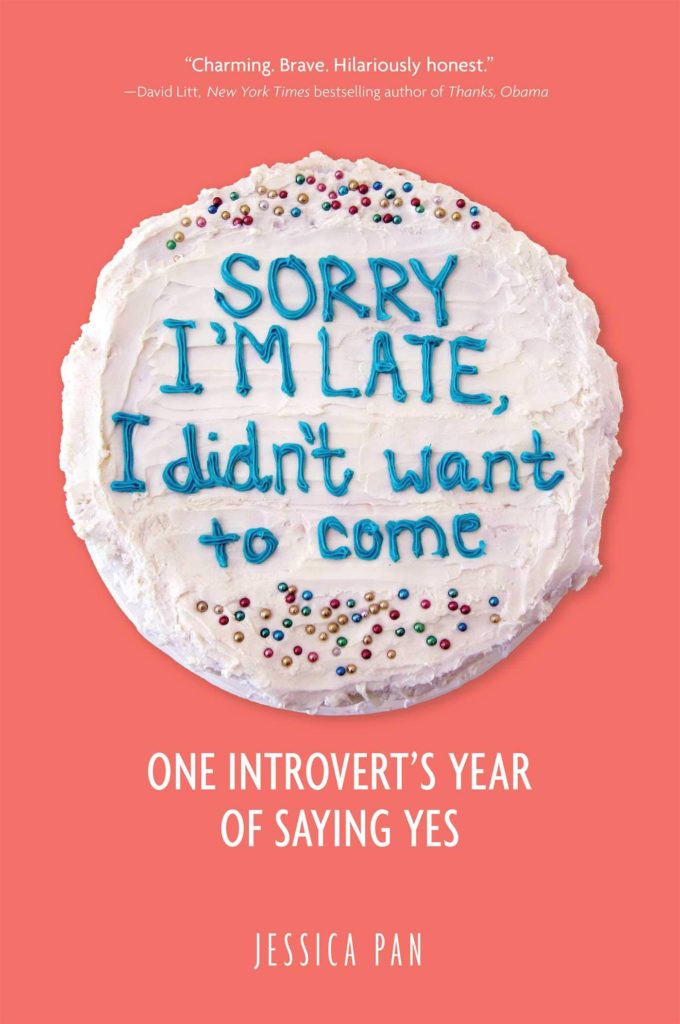Reviewed by Angela L. Eckhart
 Life stories, while different for everyone, sometimes share something in common. And that is a human connection, based upon individual experiences. It is this interconnectedness that makes memoirs so appealing. And even if others cannot identify with stories the authors share, the stories themselves may simply be compelling reads for entertainment or educational purposes.
Life stories, while different for everyone, sometimes share something in common. And that is a human connection, based upon individual experiences. It is this interconnectedness that makes memoirs so appealing. And even if others cannot identify with stories the authors share, the stories themselves may simply be compelling reads for entertainment or educational purposes.
Jessica Pan, a self-diagnosed introvert, decided to spend one year living as an extrovert. As her author’s note explains, “…I was, for a while, an unhappy introvert, and I wanted to see how my life might change if I spent a year undertaking daunting new experiences.” She was curious if extroverts were happier. Her experiments and research resulted in her memoir, Sorry I’m Late, I Didn’t Want to Come: One Introvert’s Year of Saying Yes (Andrews McMeel Publishing, May 2019).
Sorry I’m Late details her trials and revelations with sixteen chronological, cleverly titled thematic chapters that each read as personal essays. Her Introduction explains that “introverts get their energy from being alone, whereas extroverts get their energy from being around other people.” However, there are different sub-categories within the introvert, whereas not all introverts are shy. She says some introverts have enough confidence to deliver speeches or mingle in social situations but only for certain periods of time. This is where this reader has identified with similar thoughts and feelings about being an introvert, one who can perform well in social situations without extreme bouts of anxiety…thankfully…yet after a few hours of social interaction, is ready to retreat home to solitude. Pan said, “I’m antisocial anywhere after hour three, which is when I turn to dust.”
Her first chapter, “The Sauna,” was when Pan’s idea about spending an entire year trying to become an extrovert emerged. She had not only quit her job that she didn’t love, but all of her friends began to move away, thus beginning her decline into depression. A notable fact is that she recognized this decline and took charge of her feelings (rather than simply resorting to medication). She said, “I no longer knew where my natural introversion ended and my depression and loneliness began. After all, I had once been a happy introvert, but I had managed to wedge myself into a hole, through fear, insecurity, and stagnation.” She thought extroverts seemed happier and so wondered if becoming an extrovert herself would pull her out of her depression.
In “Crowd Control or Networking,” Pan recounts a complete conversation between her and a guy at a party, including her thoughts, which could actually be seen as a useful guide for other introverts to follow…almost like a “how to talk to someone at a party” scenario. Pan’s insights are heartfelt and intuitive. “It’s clear to me that networking is actually about giving, not getting. Sharing what you know. We want to help other people whom we feel a connection with.”
Her foray into this new way of living also compelled her to incorporate research. She consulted with the director of the Psychotherapy and Emotion Research Laboratory at Boston University, who suggested that “an effective treatment for social anxiety is a form of exposure therapy: to put people in their worst-case scenario, where they are guaranteed to be repeatedly rejected.” The examples of such “scenarios” may make one think of the antics that the guys perform on the Practical Jokers show. To Pan, these tests cause anxiety and are nightmarish, but to the Jokers, they are antics merely for laughs. Ultimately, though, this type of exposure was helping her. “Some people say there is no such thing as a stupid question, but by asking the stupidest of questions, I had finally faced my fear of talking to random strangers.”
She attends a class “How to Be Sociable,” created by the best-selling author Alain de Botton. Her teacher Mark explains that “sharing our vulnerabilities and insecurities is the quickest way to make a real connection with someone. Most people want to boast about their lives, but this leaves people feeling jealous or resentful.” Mark says, “We think to be interesting we have to be impressive—but sharing our failure connects us more than sharing our success.”
Pan’s writing is revealing and humorous. Her witty sarcasm makes her relatable, and her research from speaking with experts in various fields is thorough and relevant to her experiences. Yet, the act of writing this book…revealing her vulnerabilities, fears, and anxieties…must’ve also felt invigorating and refreshing, like a weight off her shoulders. For an introvert to reveal her insecurities, for all the world to read, is a significant obstacle to overcome. And this writer definitely felt the connection. Pan’s book is not only useful for introverts, but also useful for extroverts in perhaps learning more about why some people are so quiet and avoid parties. It’s a great guide into human behavior and what can result when people are willing to try to change themselves.


